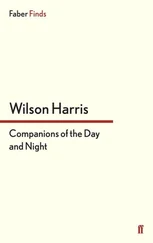He himself lavishly decorated the temple of Belos and the other temples from the spoils of war. He … (text unclear) the existing old city and added(?) another city outside the walls. And making sure(?) that attackers should no longer be able to change the course of the river and use it against the city, he surrounded the inner city with three walls and the outer city with three. Of these walls, the former were made of baked brick and bitumen, the latter of brick only. After he had fortified the city in this remarkable way and decorated the gateways in a manner that befitted their sanctity, he built in addition to his father’s palace another palace adjoining it.
In this passage, Nebuchadnezzar behaves like a traditional Babylonian king, restoring the walls, temples, and palaces of the city in a manner that recalls his own inscriptions, as has already emerged. Yet Nebuchadnezzar, in Berossos’s description, also acts like a Hellenistic monarch. John Dillery has drawn attention to phrases such as κοσμήσας φιλοτίμως (“decorating lavishly”) and τειχίσας ἀξιολόγως (“fortifying in a remarkable manner”), which are associated with the discourse of euergetism in Hellenistic times (Dillery 2013 esp. 84–85). 6More generally, Nebuchadnezzar’s actions chime with the common notion that royal benefactors supported the growth of (Greek) cities. Berossos, it would seem, cast Nebuchadnezzar as a proto-Seleucid king, and his Babylonian subjects as profiting from an early form of Hellenistic euergetism. The idea was by no means absurd: recent research has shown that Hellenistic Babylon enjoyed a significant degree of political independence (Clancier 2012b) – though the situation may already have changed under Antiochus III (and not Antiochus IV as previously thought). To some extent, this would have allowed Berossos to assimilate it to Hellenistic Greek cities and their relationship with the Seleucid king. Yet, Berossos was not so rash as to suggest that Greeks and Babylonians should enjoy the same status, much less that the two cultures could simply be merged. What he proposed was more realistic: Greek and Babylonian élites, he suggested, could continue to function each on their own terms, but within a shared framework of Seleucid institutions, values, and ideas.
Berossos develops his model of a composite empire in his portrayal of Nebuchadnezzar, the proto-Seleucid hero of his account. At BNJ 680 F 8a (137), Nebuchadnezzar must claim his throne after the death of his father Nabopolassar:
αἰσθόμενος δὲ μετ’ οὐ πολὺν χρόνον τὴν τοῦ πατρὸς τελευτὴν Ναβοκοδρόσορος, καταστήσας τὰ κατὰ τὴν Αἴγυπτον πράγματα καὶ τὴν λοιπὴν χώραν, καὶ τοὺς αἰχμαλώτους ᾽Ιουδαίων τε καὶ Φοινίκων καὶ Σύρων καὶ τῶν κατὰ τὴν Αἴγυπτον ἐθνῶν συντάξας τισὶ τῶν φίλων μετὰ τῆς βαρυτάτης δυνάμεως καὶ τῆς λοιπῆς ὠφελείας ἀνακομίζειν εἰς τὴν Βαβυλωνίαν, αὐτὸς ὁρμήσας ὀλιγοστὸς παρεγένετο διὰ τῆς ἐρήμου εἰς Βαβυλῶνα.
When Nebuchadnezzar learned of his father’s death not long thereafter, he settled his affairs in Egypt and the rest of the territory and gave control over the captives – Judeans, Phoenicians, Syrians, and the populations settled in Egypt – to some of his friends, ordering them to bring them to Mesopotamia together with the bulk of his army and the rest of the spoils. He himself set out with a few companions and reached Babylon by crossing the desert.
What we see here is a defining moment in the history of the Neo-Babylonian Empire: Nabopolassar has died, and his son Nebuchadnezzar must return from campaign to claim his throne. He relies on heroic prowess: Nebuchadnezzar must cross a desert, a typical achievement of would-be world rulers (Haubold 2013a: 110 n.125). But he must also call on the help of the “friends” (φίλοι), a technical term for the military and administrative élites of the Seleucid Empire (Savalli-Lestrade 1998; Habicht 2006; Strootman 2007: 119–180, 2011: 70; Dillery 2013: 83–84). Berossos describes these philoi as men of action, who go on campaign with the king and help him extend and defend his empire. At this crucial moment of transition, they play an indispensable role in securing Nebuchadnezzar’s conquests. However, there is a second group on whom Nebuchadnezzar relies to stabilize his rule. This is how the text continues ( BNJ 680 F 8a (138)):
καταλαβὼν δὲ τὰ πράγματα διοικούμενα ὑπὸ Χαλδαίων καὶ διατηρουμένην τὴν βασιλείαν ὑπὸ τοῦ βελτίστου αὐτῶν, κυριεύσας ὁλοκλήρου τῆς πατρικῆς ἀρχῆς …
Finding on arrival that the affairs (of the empire) were administered by the Chaldaeans and that the kingship was maintained by the best of them, he gained possession of his father’s entire realm.
Nebuchadnezzar, it now appears, relied on two distinct élites: the friends who went on campaign with him and helped him secure his conquests; and the Chaldaeans who stayed behind in Babylon to “maintain the kingship.” Berossos does not describe the Chaldaeans as “friends” of the king, but gives them equally good Seleucid credentials when using the expressions τὰ πράγματα διοικεῖν (“administering the affairs”) and τὴν βασιλείαν διατηρεῖν (“maintaining the kingship”) to outline their activities. 7Clearly, this group too is conceived in a Seleucid mold. In fact, it is not difficult to recognize in the “friends” of Nebuchadnezzar, and his Chaldaeans, a historical blueprint for the Seleucids’ reliance on (Greco-Macedonian) military and administrative élites on the one hand, and on the priestly élites of Babylon on the other (Haubold 2016).
How exactly these élites interact, and what each of them contributes to the running of the empire, requires further investigation. After the death of Nebuchadnezzar, the friends of the king again play a prominent role ( BNJ 680 F 9a (148)):
τούτου υἱὸς Λαβοροσοαρχοδοσς ἐκυρίευσε μὲν τῆς βασιλείας παῖς ὢν μῆνας θ, ἐπιβουλευθεὶς δὲ διὰ τὸ πολλὰ ἐμφαίνειν κακοήθη ὑπὸ τῶν φίλων ἀπετυμπανίσθη.
His son Laborosoarchodos took over the kingship while he was still a child. He ruled for eight months, after which the friends plotted against him and put him to death because of the wickedness which he had displayed in many regards.
During the turbulent years after the death of Nebuchadnezzar, Berossos tells us, the friends overthrew and killed the child king Laborosoarchodos. Again they take action in times of crisis – though in this case they plot against the king. Berossos is ambivalent about the process: on the one hand, he describes Laborosoarchodos as “wicked,” which suggests that the friends did act in the interests of the empire. On the other hand, the unusual and slightly obscure verb ἀποτυμπανίζω (“put to death,” literally “crucify on a plank”) suggests a degree of unpleasantness that is perhaps significant in view of the fact that the conspirators’ intervention turns out to be ill-fated: their chosen candidate for the kingship is Nabonidus, the hapless last king of the Chaldaeans, according to Berossos.
The murder of Laborosoarchodos illustrates well the strengths of the Seleucids’ military and administrative élites as Berossos saw them: these men were needed to sustain the empire and in times of crisis could act decisively and in the interest of the common good. However, their methods were problematic, and could not guarantee long-term stability. There is no suggestion that the friends acted in bad faith when they got rid of Laborosoarchodos, but Berossos does hint that murdering the young king (whom one might perhaps rather have thought in need of benign correction) contributed to the downfall of the dynasty not long after. The friends of the king, it would seem, did not have the wherewithal to “maintain the kingship” in the long term; that, Berossos suggests, was a Chaldaean task.
Читать дальше












